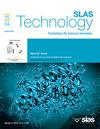IoT-based approach for diabetes patient monitoring using machine learning
IF 3.7
4区 医学
Q3 BIOCHEMICAL RESEARCH METHODS
引用次数: 0
Abstract
This study presents an IoT-based framework for real-time diabetes monitoring and management, addressing key limitations identified in previous studies by integrating four datasets: BVH Dataset, PIMA Diabetes Dataset, Simulated Dataset, and an Integrated Dataset. The proposed approach ensures diverse demographic representation and a wide range of features including real-time vital signs (e.g., oxygen saturation, pulse rate, temperature) and subjective variables (e.g., skin color, moisture, consciousness level). Advanced preprocessing techniques, including Kalman Filtering for noise reduction, KNN imputation for addressing missing data, and SMOTE-ENN for improving data quality and class balance, were employed. These methods resulted in a 25 % improvement in Recall and a 20 % increase in the F1-score, demonstrating the model's effectiveness and robustness.
By applying PCA and SHAP for feature engineering, high-impact features were identified, enabling the tuning of models such as Random Forest, SVM, and Logistic Regression, which achieved an accuracy of 97 % and an F1-score of 0.98. A novel triage system, integrated with edge and cloud computing, classifies health status in real-time (Green, Yellow, Red, Black), reducing latency by 35 %. The proposed system sets a new benchmark for scalable, individualized diabetes care in IoT-based healthcare solutions, demonstrating significant improvements in accuracy, response time, and feature incorporation compared to prior works.
基于物联网的糖尿病患者机器学习监测方法
本研究提出了一个基于物联网的糖尿病实时监测和管理框架,通过整合四个数据集:BVH数据集、PIMA糖尿病数据集、模拟数据集和集成数据集,解决了先前研究中发现的关键局限性。所提出的方法确保了多样化的人口统计学表征和广泛的特征,包括实时生命体征(例如,氧饱和度、脉搏率、温度)和主观变量(例如,肤色、湿度、意识水平)。采用了先进的预处理技术,包括用于降噪的卡尔曼滤波,用于寻寻缺失数据的KNN输入,以及用于提高数据质量和类平衡的SMOTE-ENN。这些方法使召回率提高了25%,f1得分提高了20%,证明了模型的有效性和稳健性。通过应用PCA和SHAP进行特征工程,识别出高影响特征,实现随机森林、支持向量机和Logistic回归等模型的调优,准确率达到97%,f1得分为0.98。一种新型的分类系统,集成了边缘和云计算,实时分类健康状态(绿色、黄色、红色、黑色),减少了35%的延迟。该系统为基于物联网的医疗保健解决方案中可扩展的个性化糖尿病护理设定了新的基准,与之前的工作相比,在准确性、响应时间和功能整合方面有了显着改善。
本文章由计算机程序翻译,如有差异,请以英文原文为准。
求助全文
约1分钟内获得全文
求助全文
来源期刊

SLAS Technology
Computer Science-Computer Science Applications
CiteScore
6.30
自引率
7.40%
发文量
47
审稿时长
106 days
期刊介绍:
SLAS Technology emphasizes scientific and technical advances that enable and improve life sciences research and development; drug-delivery; diagnostics; biomedical and molecular imaging; and personalized and precision medicine. This includes high-throughput and other laboratory automation technologies; micro/nanotechnologies; analytical, separation and quantitative techniques; synthetic chemistry and biology; informatics (data analysis, statistics, bio, genomic and chemoinformatics); and more.
 求助内容:
求助内容: 应助结果提醒方式:
应助结果提醒方式:


